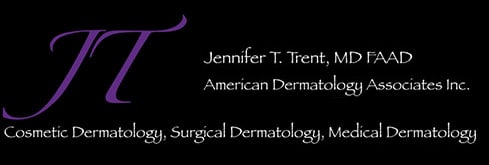One Person Dies Every Hour in the US from Melanoma!
- Posted on: May 7 2018
- Leave a response
Melanoma is one of the deadliest forms of skin cancer. It usually occurs when ultraviolet (UV) radiation from the sun damages the DNA of certain skin cells called melanocytes, which produce pigment. Melanoma (MM) is the third most common form of skin cancer affecting almost 200,000 people a year in the US. It kills approximately 10,000 people a year in the US. If MM is caught early and treated early, it is curable. MM often arises from pre-existing moles. Here is what to look for when doing your monthly self-exam. These warning signs are called the ABCDE’s:
A = Asymmetry. If you draw an imaginary line through the mole and they aren’t mirror images of each other, then your mole is asymmetric.
B = Borders. Irregular, asymmetric, jagged or ill-defined borders are suspicious.
C = Colors. If it has changed color or has different colors within the mole, then it is suspicious.
D = Diameter. We used to educate people on moles that were bigger than a pencil eraser. Now we know that MM can be any size. Be on the lookout for moles that change diameter/size.
E = Evolving. Is the mole changing size, shape, color? Those are warning signs.
UV radiation from the sun, whether it is in the form of sunburns or cumulative sun exposure, can lead to the development of MM. 5 or more sunburns in your lifetime doubles your risk for MM. In addition to UV radiation from the sun, there are other risk factors as well. MM often runs in families. If it does, all blood relatives should get their skin checked by a dermatologist. Certain skin types are more susceptible, such as people with fair skin/hair/eyes or red-heads with freckles. Also, people with weakened immune systems, such as those who have received organ transplants, are at increased risk for MM. Once you have had one MM, you have 9 times increased risk of developing another.
If you follow these ABCD’s of sun protection, you can stay safe and still enjoy the outdoors!
A = Avoid the sun, especially between the hours of 10am-4pm.
B = Block the sun’s radiation by using sunscreen. Here are certain tips which will help you with sunscreens. I recommend one with SPF 50+ broad spectrum UVA and UVB protection. If you are using one with chemical blockers, such as Avobenzone in La Roche Posay’s SPF 60 Melt-In Sunscreen Milk, you need to apply it 30 minutes prior to sun exposure. If you are using a sunscreen with physical blockers, such as zinc oxide in Elta MD UV Physical SPF 41 or Eau Thermale Avène High Protection Tinted Compact SPF 50, you can apply it immediately prior to sun exposure. It takes 1 ounce to cover the entire body and a nickel size amount to cover just the face. Always check expiration dates on your sunscreen. You must reapply sunscreen every 80 minutes. If you are swimming or sweating a lot, you might need to reapply every 40 minutes. The directions on the back of the bottle of sunscreen should tell you how often you need to reapply. NO sunscreen lasts all day!
C = Cover up. Sunscreen is very important, but cannot by itself protect as well as the combination of sunscreen with protective clothing. I love Coolibar UPF 50+ clothing. It is stylish and protective. It is important to wear a wide brim hat with UPF 50+ and at least a 4-inch brim, to help protect your face, scalp, and neck. Sunglasses with UVA & UVB protection serve not only to protect your eyes but also the skin around your eyes. When outside, wear long sleeves and long pants. A buff or neck gaiter is great to protect your neck and face. Hands are a dead give away for your age. So, don’t forget to protect them by wearing gloves.
D = Dermatologist. Make sure you see your dermatologist at least every year to check your skin for cancer. Early detection and treatment is the key to surviving skin cancer.
Prevention is the best, but sometimes we forget to be as conscientious about sun protection as we need to be. Please share this will all your friends and family and encourage them to get an annual skin check, it could save their life! Keep on the lookout for my new blog on Coolibar.com for more info about other ways to protect yourself.
Contact our Sarasota office at (941) 379-6647 to learn more about scheduling for a skin check with Dr.Trent.
Posted in: Skin Cancer


